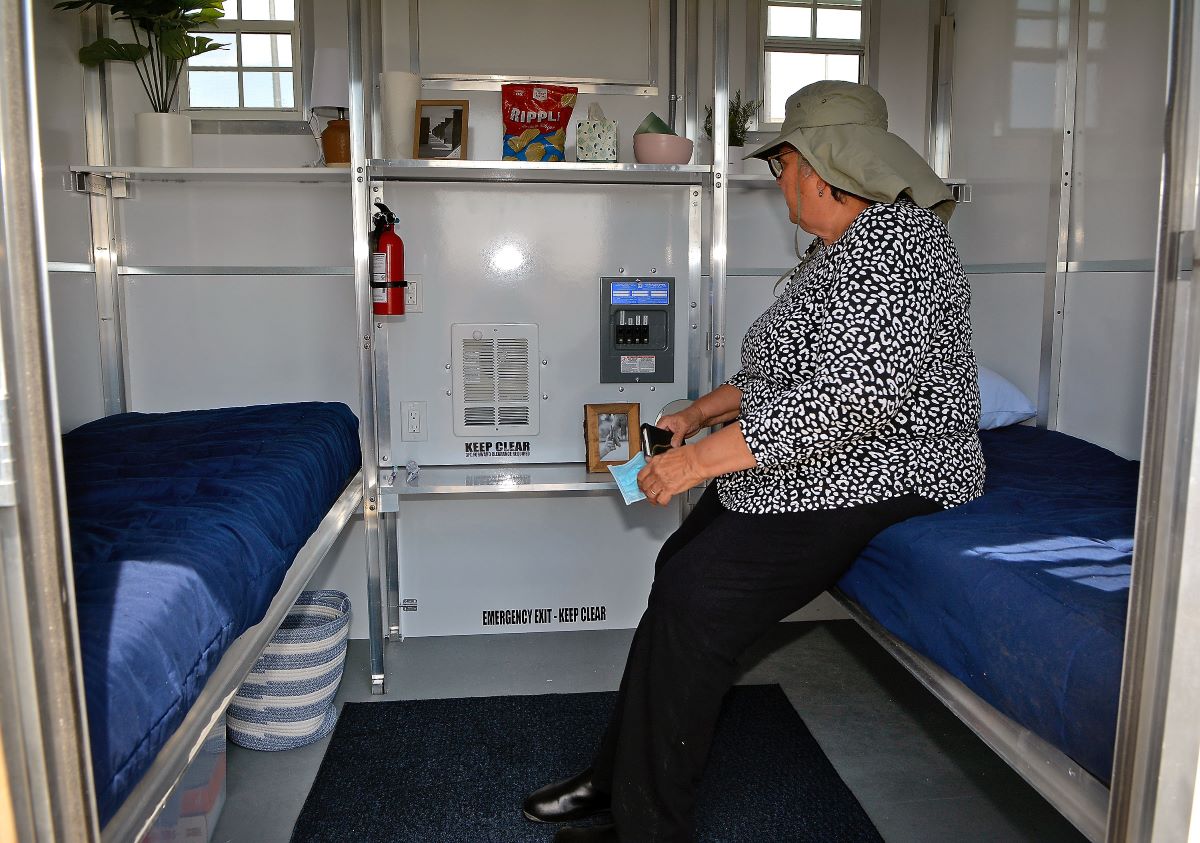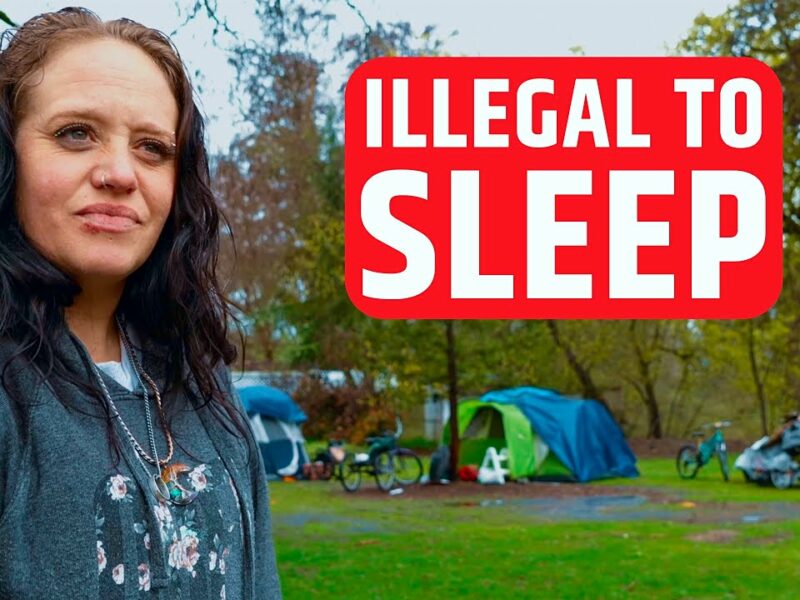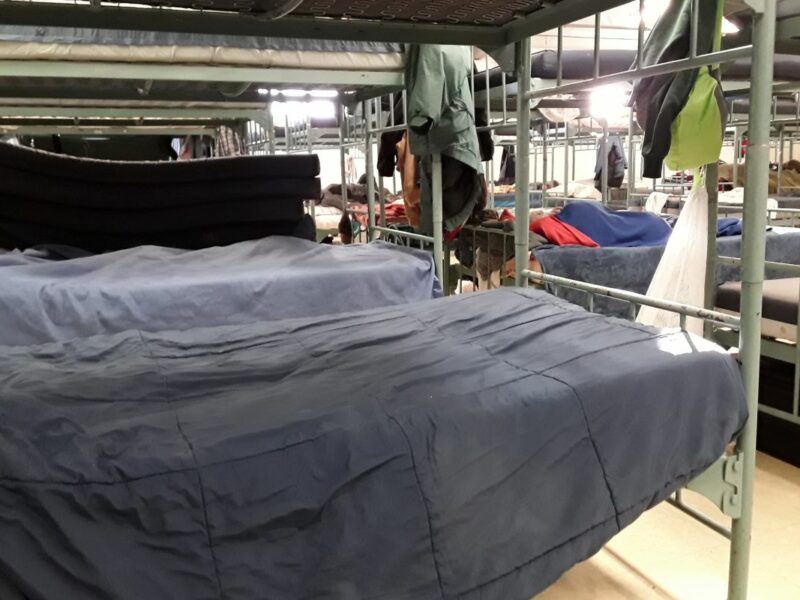From Sacramento to Denver and Flint, Michigan, cities of all sizes are investing in tiny home shelters as temporary housing solutions for local homeless folks. While these projects represent an expedient shelter option for some people experiencing homelessness, some advocates worry that the strategy may not go far enough toward providing people with stable housing placements.
These investments are happening when eviction rates are increasing in some of America’s largest cities. Those evictions are forcing some people into homelessness.
The U.S. Department of Housing and Urban Development will release its national homeless count data for 2023 next year. But cities like New York City and Chicago, where rents have increased by 10% and 24% over the last year, respectively, are already tallying higher rates of homelessness for families and senior citizens.
At the same time, advocates like Paul Boden with the Western Regional Advocacy Project are concerned that cities will continue to push criminalization efforts after they purchase tiny home shelters.
“Homeless sweeps didn’t start until we opened up homeless shelters in the 1980s,” Boden told Invisible People. “40 years later, they’re still here, and homelessness is worse than it’s ever been. Connect the dots.”
Tiny home shelters have been used in cities like Portland, Oregon, and Denver, Colorado, for several years. The shelters are often fully assembled in factories and then delivered to tiny home villages, which greatly reduces the cost of construction. A startup in Washington called Pallet sells its tiny home shelters for between $7,500 and $12,000, according to a profile of the company.
The low cost and labor requirements for the shelters are two reasons why they have become popular in cities ranging from Milwaukee to San Francisco. A third reason is that increasing construction material costs and rising interest rates made it much more difficult for cities and private developers to build affordable housing for people earning low or no income.
Little Rock, Arkansas, is one city that recently opened a tiny home shelter village for local homeless folk.
The city spent about $3 million, half of which came from federal pandemic stimulus funds, to buy 80 tiny homes and build a 20-bed emergency shelter, local news station KATV reported. The community can house up to 206 residents for up to six months.
“We hope that this will be the beginning of a movement toward better resources and stability for our brothers and sisters who are unsheltered and homeless,” Carol Miles, director of the nonprofit homeless resource center Depaul USA Little Rock, told KATV.
California Gov. Gavin Newsom has also pledged to spend state resources to help local cities acquire their own tiny home shelters. The state recently finalized the purchase of 1,200 tiny homes, and the first shipment of them was expected to arrive by the end of October.
“The state’s homelessness crisis has been decades in the making,” Newsom said in a press release. “While there’s more work to be done, we are challenging the status quo with new, innovative solutions to get Californians off the streets and into housing.”
Boden said tiny home shelters can present a favorable alternative to some local shelters because the tiny homes are generally cleaner and give people privacy. But Boden worries that tiny home shelters are being sold to the public as a permanent solution to homelessness when they should be considered a steppingstone toward housing, at best.
“Are tiny homes better than a sharp stick in the eye? It sure is, especially to the person who gets to live there,” Boden said. “But are tiny homes a solution to homelessness? The answer is hell no.”
How You Can Help
The pandemic proved that we need to rethink housing in the United States. It also showed that aid programs work when providing agencies and service organizations with sufficient funds and clear guidance on spending aid dollars.
Contact your officials and representatives. Tell them you support keeping many of the pandemic-related aid programs in place for future use. They have proven effective at keeping people housed, which is the first step to ending homelessness.











